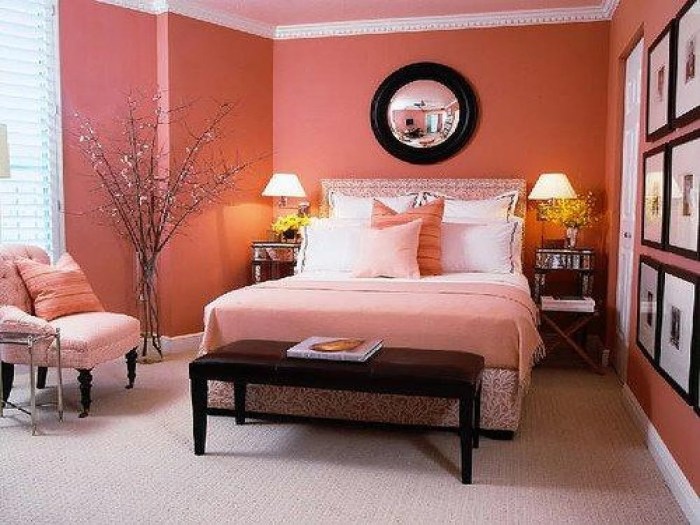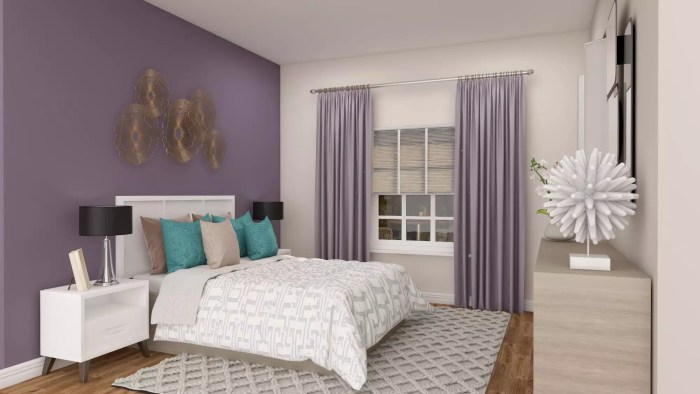How Many Colors to Decorate a Room A Guide to Choosing the Perfect Palette
How many colors to decorate a room – In life, we are surrounded by a multitude of colors that can evoke various emotions and moods. When it comes to decorating a room, the colors you choose can have a significant impact on the overall ambiance and feel of the space. It is important to carefully consider the color palette you want to incorporate in order to create a harmonious and inviting environment.
How Many Colors to Decorate a Room?
When deciding on how many colors to use when decorating a room, it is essential to strike a balance between too many and too few. Using too many colors can create a chaotic and overwhelming space, while using too few can result in a dull and uninspiring room. The key is to find the right combination of colors that complement each other and create a cohesive look.
Tips for Choosing Colors
- Start by selecting a primary color that will serve as the foundation for your color scheme.
- Choose 2-3 additional colors that harmonize with the primary color and add depth and interest to the room.
- Consider the size and lighting of the room when choosing colors. Lighter colors can make a small room feel more spacious, while darker colors can create a cozy and intimate atmosphere.
- Experiment with different shades and tones of the same color to create a layered and sophisticated look.
4. Use the 60-30-10 rule
When it comes to decorating a room with crafts, the key is to choose items that reflect your personal style and interests. Whether it’s handmade wall art, DIY storage solutions, or upcycled furniture, incorporating crafts into your decor can add a unique touch to your space. For inspiration and ideas on how to get started, check out this helpful guide on how do u decorate a room with crafts.
60% of the room should be the dominant color, 30% should be the secondary color, and 10% should be an accent color.
What Do You Mean By Color Harmony?

Color harmony refers to the combination of colors that are visually pleasing and work well together. There are several color schemes that can help you achieve harmony in your room, such as complementary, analogous, and monochromatic. Complementary colors are opposite each other on the color wheel and create a bold and dynamic look, while analogous colors are next to each other on the wheel and create a more subtle and cohesive feel.
Monochromatic color schemes involve using different shades of the same color for a sophisticated and elegant look.
What is Known About Color Psychology?, How many colors to decorate a room
Color psychology is the study of how colors can affect our emotions, behavior, and mood. Different colors have different psychological effects, and understanding these effects can help you create a room that promotes the desired atmosphere. For example, blue is often associated with calmness and serenity, while red can evoke feelings of passion and energy. By incorporating the right colors into your room, you can create a space that promotes relaxation, productivity, or creativity, depending on your goals.
Solution for Choosing Colors
When choosing colors for your room, it is important to consider the overall mood and purpose of the space. Think about how you want to feel when you are in the room and choose colors that support that feeling. If you are looking to create a serene and peaceful environment, opt for cool and muted tones. If you want to energize and inspire, consider using vibrant and bold colors.
Ultimately, the key is to trust your instincts and choose colors that resonate with you personally.
Detail Information
When selecting colors for your room, pay attention to the undertones of each color. Warm undertones (such as yellow or red) can create a cozy and inviting atmosphere, while cool undertones (such as blue or green) can make a room feel more refreshing and calming. Consider how natural light affects the colors in the room, as different lighting conditions can alter the way colors appear.
It is also important to test paint samples on the walls before making a final decision, as colors can look different in various lighting situations.
Describe in Depth
Creating a cohesive and harmonious color scheme for your room involves careful planning and consideration. Think about the purpose of the room, the mood you want to create, and the overall aesthetic you are trying to achieve. Take inspiration from nature, art, and fashion to help guide your color choices. Experiment with different combinations and don’t be afraid to step out of your comfort zone.
Remember that decorating with color is a creative and personal process, so trust your instincts and have fun with it.
Conclusion

In conclusion, choosing the right colors to decorate a room can have a profound impact on the overall look and feel of the space. By following these tips and considering color harmony, psychology, and solutions, you can create a room that is both visually stunning and emotionally fulfilling. Remember to trust your instincts, experiment with different combinations, and most importantly, have fun with the process.
When it comes to decorating a room with crafts, the key is to add personal touches that reflect your style and creativity. You can hang handmade artwork on the walls, create unique DIY throw pillows, or display handcrafted ornaments on shelves. Incorporating crafts into your decor adds a unique and personal touch to your space, making it truly one-of-a-kind. If you’re looking for inspiration on how to decorate a room with crafts, check out this helpful guide on how do u decorate a room with crafts.
Happy decorating!
FAQs
- How do I know which colors will work best together in a room?
- What are some common color schemes that I can use for decorating?
- How can I use color psychology to create a specific atmosphere in a room?
- What are some tips for incorporating bold colors into a room without overwhelming the space?
- Is it necessary to follow strict color rules when decorating, or can I mix and match as I please?
